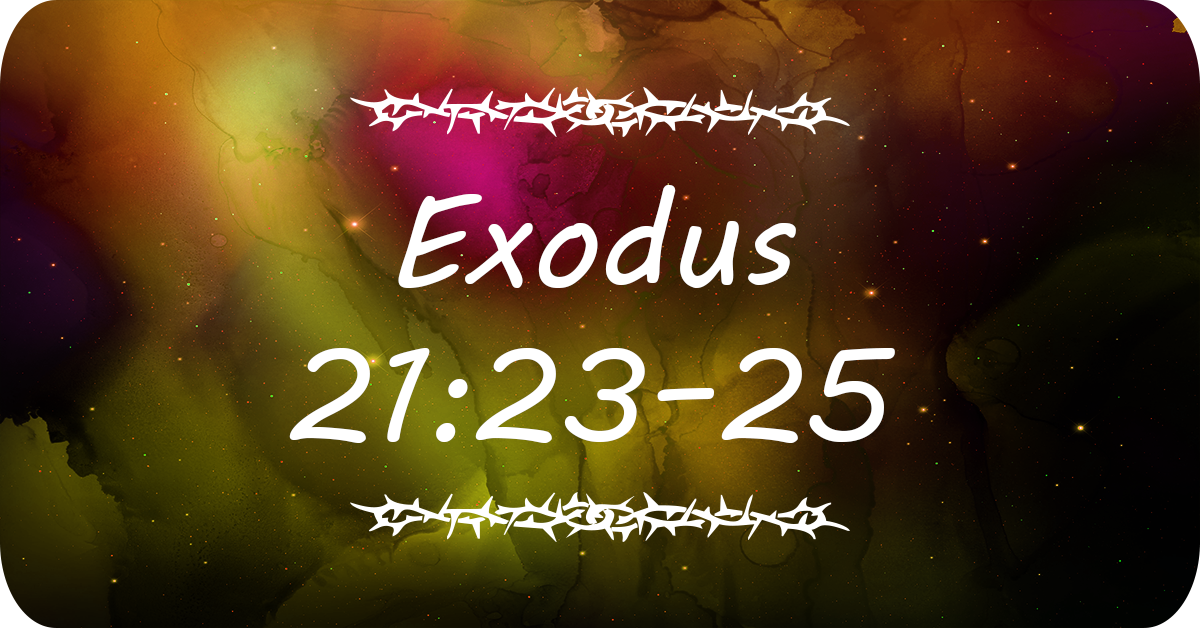Verses often taken out of context or misused: Exodus 21:23–25
Exodus 21:23–25 [23] But if there is harm, then you shall pay life for life, [24] eye for eye, tooth for tooth, hand for hand, foot for foot, [25] burn for burn, wound for wound, stripe for stripe. (ESV)
This verse seems to come up when someone feels wronged or has been hurt, as there is often a temptation to retaliate in some way. It is a common phrase that is selectively quoted out of context, and it was even misunderstood and misused in Jesus’ day. Many people feel that it serves as a license for someone to do equal harm to someone else who has harmed them. For example, if you hit my arm, I’ll hit your arm, or if you dent my car, I’ll break your windshield. Even if the initial harm was done by accident, some feel perfectly justified in “settling the score” and may appeal to this verse.
Look at the context:
Exodus 21:22–25 [22] “When men strive together and hit a pregnant woman, so that her children come out, but there is no harm, the one who hit her shall surely be fined, as the woman’s husband shall impose on him, and he shall pay as the judges determine. [23] But if there is harm, then you shall pay life for life, [24] eye for eye, tooth for tooth, hand for hand, foot for foot, [25] burn for burn, wound for wound, stripe for stripe. (ESV)
Side note: Scripture is ascribing personhood to the unborn child that was forced to be born prematurely, which ought to teach us that any developing unborn baby has equal value when compared to the life of an adult.
What is it about? It is part of the Mosaic Law used in the Israelites’ justice system. The principle is that the punishment must fit the crime and there should be a just penalty for evil actions. Justice should be equitable; excessive harshness and excessive leniency should be avoided. The law of “an eye for an eye” is mentioned two other times in the Old Testament (Leviticus 24:20; Deuteronomy 19:21). Each time, the phrase is used in the context of a case being judged before a civil authority such as a judge. “An eye for an eye” was intended to be a guiding principle for lawgivers and judges; it was never to be used to justify vigilantism or settling grievances personally. It is important to note that God has established governing authorities on the earth to restrain evil and to dispense justice in criminal cases (Romans 13).
Jesus addressed the common misuse of this personal retaliation taught by the Pharisees and scribes in:
Matthew 5:38–42 [38] “You have heard that it was said, ‘An eye for an eye and a tooth for a tooth.’ [39] But I say to you, Do not resist the one who is evil. But if anyone slaps you on the right cheek, turn to him the other also. [40] And if anyone would sue you and take your tunic, let him have your cloak as well. [41] And if anyone forces you to go one mile, go with him two miles. [42] Give to the one who begs from you, and do not refuse the one who would borrow from you. (ESV)
Thankfully, our patience for justice can rest in the promise of God that “Vengeance is mine, I will repay” found in (Deuteronomy 32:35; Romans 12:19; Hebrews 10:30).

